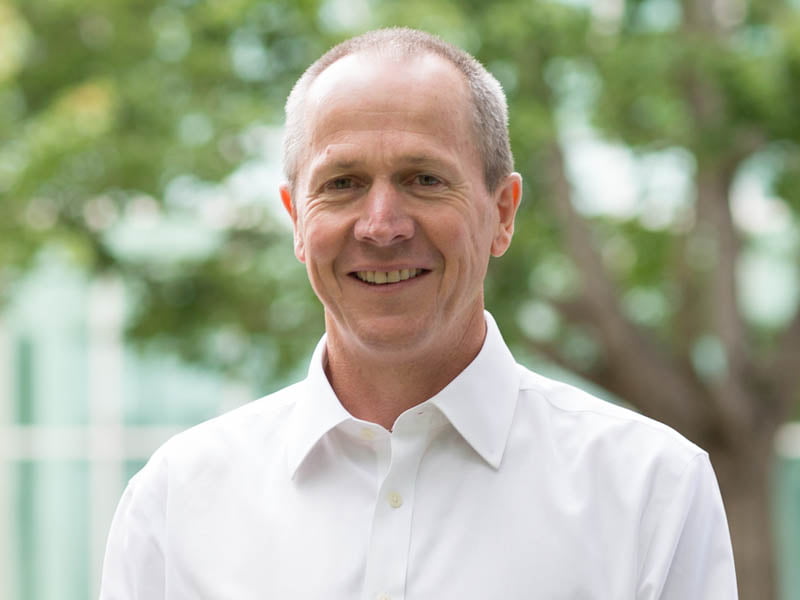Newly-appointed Digital Transformation Agency chief executive Gavin Slater – an ex-banker from Melbourne – will be spending plenty of time in airports in the coming months as the governments recommits to Sydney as a key innovation hub.
Mr Slater, who was named to the role on Wednesday by Assistant Minister for Digital Transformation Angus Taylor, will split his work days between the DTA’s Canberra and Sydney while commuting from Melbourne.
The appointment marks the end of the beginning for the DTA, which was restructured last October and has been on a hunt for a new CEO since then.

Mr Slater will almost certainly bring with him a senior team of delivery people from the private sector into the role when he starts on May 1 – and positions have been kept vacant to give him the flexibility to do just that.
Interim-CEO Nerida O’Loughlin is expected to remain with the DTA for an interim period – at least until the end of May and possibly longer – before taking up a long-rumoured appointment to run the Australian Communications and Media Authority.
In Mr Slater, the government clearly feels they have found their man. Having been a member of the National Australia Bank Group Executive team up until the middle of 2016, he brings heavy weight to the expanded role.
He is a delivery executive, having had direct line responsibility for the seven-year revamp of the NAB’s core banking system. This is important and should send a signal that the DTA is expected to deliver – something that had been under question since it was restructured last year.
And those really are the attribute government was looking for. First, someone from the private sector, someone who could be that change agent. Secondly, someone with substantial corporate weight with big enterprise political experience (and who can throw that weight around.) Finally someone intimately experienced in building the structures for large enterprise delivery and governance.
The proof will be in the eating, but the signals coming out of Angus Taylor’s office is that this is the right guy. Now we’ll see how the rest of the vacant positions get filled. There is a Chief Digital Officer role vacated by Paul Shetler last November, and a Chief Technology Officer role.
There is also the long-promised advisory board to the Digital Transformation Agency. This had been left intentionally blank until a CEO had been appointed.
Mr Slater will rely on the Public Service-heavy expertise as comprador’s of the DTA’s Head of Projects, Procurement and Assurance Peter Alexander (who had been COO under the previous DTO structure last year) and Head of Policy, Design and Partnerships, Jose Del Rio. Navigating the public service will be the early challenge.
And he retains the well-regarded delivery expertise of Rachel Dixon and Catherine Thompson, who run the agency’s most successful platform on digital identity and marketplace respectively.
One decision that seems to have already been made for Mr Slater is a commitment for the DTA to retain its development and innovation facility in Sydney.
There is also an understanding that the DTA is planning a tighter strategic relationship with the CSIRO business unit Data61. The thinking is that in a modern enterprise, there delineation between IT and data is blurred – and that government, as one of the great producers of data, needs to substantially bolster its data expertise.
So expect the DTA to work much more closely with Data61. It is possible that the DTA may even co-locate with Data61 in Sydney and in Canberra.
The commitment to Sydney is good news for smaller Australian tech companies, and for startups trying to press ideas into the federal government.
There is a recognition that Sydney’s startup innovation culture is a long way from the core enterprise tech expertise of the Australian Public Service. And so the DTA’s commitment to a substantial Sydney base of operations is about engagement with new ways of doing things – and this includes in its data collaborations with Data61.
Ultimately the DTA in Sydney becomes effectively a gateway into the Federal Government for new ideas and innovation. It is an attempt at least to put the Commonwealth on the front end of new waves of mainstream enterprise technology thinking, rather than a generation or two behind as it has consistently found itself.
The opportunities for service improvement, cost savings and productivity gains are immense for the DTA. This is the unchallenged dictum from both sides of politics, and is one of the reasons the heat has come back into the debate about digital transformation at the AIIA summit in Canberra yesterday.
The appointment of Gavin Slater at least sets a direction.
What the Australian industry will be keen to see is Mr Slater’s approach to big contracts. His background by the fact that he comes from Big Four banking is in the heart of VendorLand. The giant transformation he led at the NAB was an Oracle implementation, albeit a significant co-development effort with the US software vendor.
We will have to wait and see what kind of attitude and structure he brings to engagement with smaller, local companies. We know that his orders call for the traditionally large projects and large contracts to be broken up into component pieces, making it easier for small companies to become suppliers to government.
We know that his orders also include a focusing on re-skilling the Australian Public Service so that it is less reliant in the big outsourced services providers and systems integrators.
So we will wait to see how he goes with that. It’s a big job. But with whole of government ICT procurement oversight now within the DTA, Mr Slater will carry a big stick.
Do you know more? Contact James Riley via Email.

